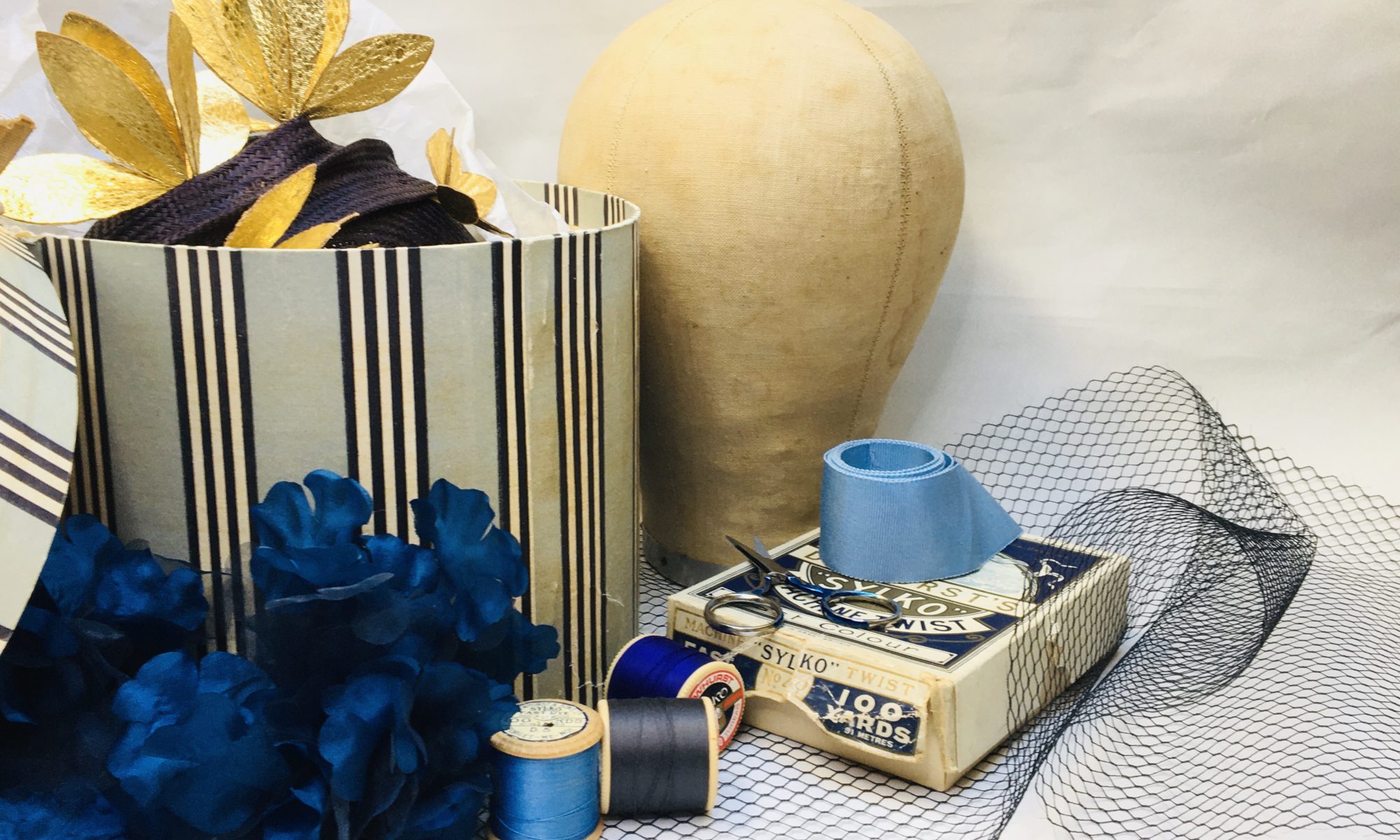
With hand cut petals and leaves, hand dyed fabric and hand made in the Poppy Land of Norfolk, England.
Earlier this month (October 2023), I spent an intense Saturday afternoon being put through my flower-making paces by Jenny Roberts, the renowned milliner based in Harrogate, Yorkshire. I’ve taken several of Jenny’s online classes over the past two or three years and they are always excellent; full of tips, clear instruction and striking just the right pitch and pace. This latest class was a four hour-long Zoom session focusing on the hand production and custom ombre dyeing of poppies in a slightly hard-to-come-by fabric called cotton organdie (refer to image for end results)
Norfolk, the county where I’m based, has historically been closely connected to the poppy flower. However, I think I am correct in saying that, these days, the connections are rarely referenced in local or popular culture, save for the occasional tourist postcard or souvenir tea towel. Time was (in the late Victorian period) when visiting the ‘Poppy Land’ of Norfolk was nothing short of a fashionable craze and Norfolk was coined as the place “where the regal red poppies are born”. There are some wonderful old travel posters for the now defunct Great Eastern Railway promoting the “charm” of Poppy Land and the railway line as the “royal route to Poppy Land” (don’t forget, for example, that Sandringham House, the Christmas residence of the British Royals, is to be found on the North Norfolk coast).
The creation of the Poppy Land legend was largely down to a Victorian gentleman, lyricist, writer, poet and theatre critic for The Daily Telegraph named Clement Scott (1841-1904). In 1883 Scott, a Londoner, travelled on assignment to the area via the newly opened rail connection between Norwich and the seaside resort of Cromer. On arrival in tourist-y Cromer, and unable to secure accommodation, Scott walked along the coastal path to the neighbouring villages of Overstrand and Sidestrand. There, he stumbled upon the idyllic Mill House, where he lodged and fell in love with both the quiet beauty of the locale and with the miller’s daughter, Louie Jermy. Scott recounted his impressions of Poppy Land in his Telegraph column for several weeks and, later, in his book, Poppy Land – Papers Descriptive on the East Coast (1886). These descriptions of an unspoiled and remote vision of rural England may be attributed to kick-starting the, still flourishing, Norfolk tourist industry and the longstanding popularity of the county as a Summer holiday destination. Scott’s Poppy Land captured the imagination of London’s literary and artistic set, who travelled to Mill House and its surrounds in droves; so much so that Sidestrand became known as “the village of millionaires” for a time.
Ironically, Scott became frustrated by the growth in popularity and bustle that his own writings brought to the area and feared that the peaceful charm of Poppy Land may be threatened by development and what he referred to as the “Bungalow Land” of modern construction and incomers. His was, and remains, a common and unfortunate complaint. However, as a Norfolk resident, I am glad to have spent many happy hours over the years visiting, holidaying on, and thoroughly enjoying, the coastline of Cromer, Overstrand and Sidestrand alike, all of which retain a substantial portion of their simple and nostalgic appeal. And, as a Norfolk milliner, I am glad now to have learned the art of poppy making so that I may add a local and historical splash of colour to my hats; all of them proudly made in Poppy Land.

